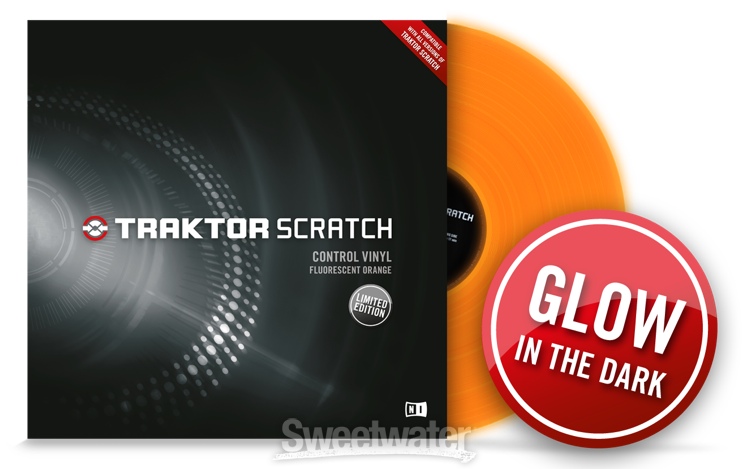Cd - Timecode - Traktor Scratch Pro
Posted By admin On 24/11/17TRAKTOR SCRATCH PRO 2 SOFTWARE & TIMECODE KIT*. Unity3d Third Person Controller Script here. TRAKTOR SCRATCH PRO 2 with Remix Decks™ system for spinning music files with super-tight vinyl / CD control. Buy Native Instruments Traktor Scratch Control CD MK2: Accessories - Amazon.com FREE DELIVERY possible on eligible purchases.

Shares 266 a note from the editor. Timecode records are an amazing technology but sometimes their performance can be a fickle beast. Pspice Demo Version 15.7.
DVS systems like serato and traktor scratch are subject to a wide number of variables including noise interference, cartridge quality and turntable calibration just to name a few. Its not uncommon to show up to a club and find one turntable is barely working with only a few minutes to trouble shoot before your set. For this reason I personally prefer the reliability of midi but turntable lovers must be able to diagnose timecode problems quickly and accurately. In this article Ranier, the author of the Traktor bible, will show you how to correctly identify almost all possible timecode problems.
TIMECODE BASICS The magic of using timecode to control Traktor results from the interplay between the timcode decoder inside Traktor and the data format on the timecode media. This article covers the practical aspects and explains how to use the calibration feature to detect, analyze and solve timecode problems. Part 2 (to be published Friday) explains what’s inside the timecode signal and how Traktor extracts the contained information to control the deck playback. If you are spinning with timecode then you should display the scratch panels for two reasons. One reason is that the scratch panel contains the RST button; this is the button you need to calibrate your decks with.
The other reason is that scope view offers valuable information that can help solve timecode related problems. Activating Scratch Panels in Traktor Scratch Pro To do this open the dialog Preferences/Deck Details and activate the Scratch Panels with the check box for the decks with which you are using timecode. Scratch panels are always activated for two adjacent decks (i.e. The visibility of the scratch panels can only be set in this dialog. Traktor does not provide a MIDI command to do this.
The Scratch Panels setting is stored within the layout definitions. Activating Scratch Panels in Traktor Scratch Duo Traktor Scratch Duo offers no direct way to activate the Scratch Panels. This can only be done by using the layout selector in the Traktor header and selecting the appropriate layout. There are two layouts where the scratch panels are enabled. Those are: Ext. Mixer (Sync) and Ext.
Mixer (Scope). If your layout selection list offers different layouts you need to start the Setup Wizard (click its command in menu Help). Select No or Other Controllers in the upper list of the Wizard and Traktor Scratch – A4DJ in the lower list. After clicking Apply the Wizard rebuilds the layouts you need to activate the scratch panels. Scratch Panels: Vinyl View and Scope View The scratch panels offer two different views: the vinyl mode and the scope mode. In vinyl mode (sticker view) the scratch panel looks like the adjoining figure. Vinyl mode shows a “virtual” vinyl or compact disc: the disc rotates if the deck is receiving timecode signals form the turntable or CD player.
The direction and speed that the “virtual” vinyl is rotating corresponds to the direction and speed that the timecode vinyl or timecode cd is turning. (Part 2 of this series explains how Traktor detects this information.) Click the scratch panel to switch between vinyl view and scope view. In scope mode the scratch panel displays information about the signal that the timecode decoder receives from the turntable or CDJ player.
And: Scope mode displays the most important button when using timecode: the RST button. Clicking the RST button calibrates the deck. More information about calibrating can be found further down. The Calibration Circle The scope mode is an important source of information for detecting, analysing and solving problems with timecode control. The following table shows how the scope mode can look like and explains what to do to solve possible problems. This is how the calibration circle looks with timecode vinyl if everything is okay.
Traktor displays information about the detected medium in the lower part of the panel (here the 15 minute side of the vinyl). This is how the calibration circle looks with timecode CD if everything is okay. Traktor displays information about the detected medium in the lower part of the panel (here CD). Traktor is waiting for the timecode signal. This is a normal message and we don’t need to be worried. This scope is shown, for example if the needle is lifted from the vinyl. The scratch functionality is deactivated.